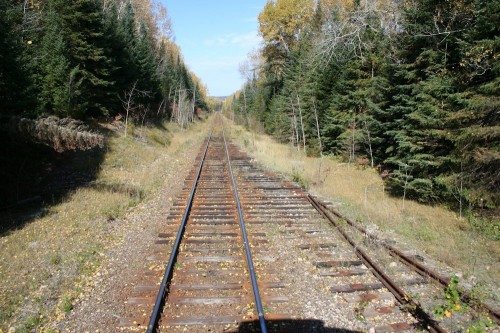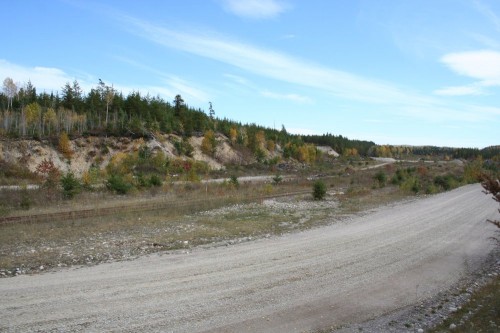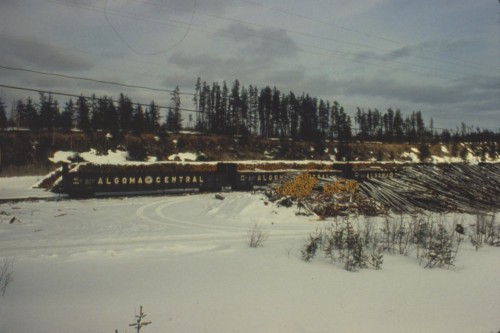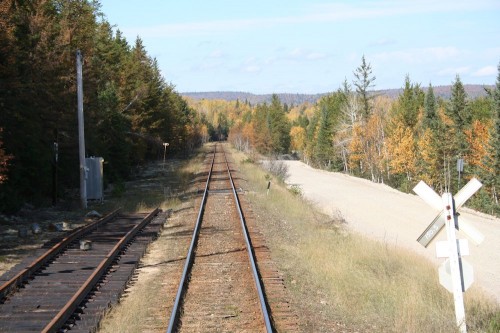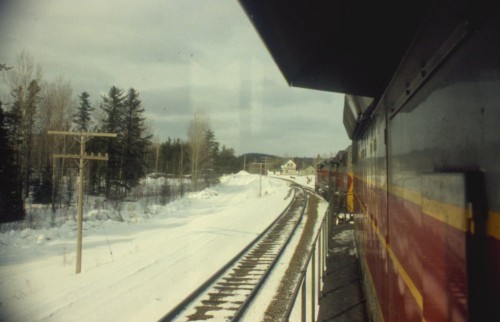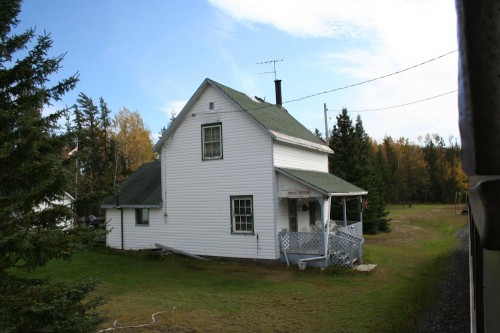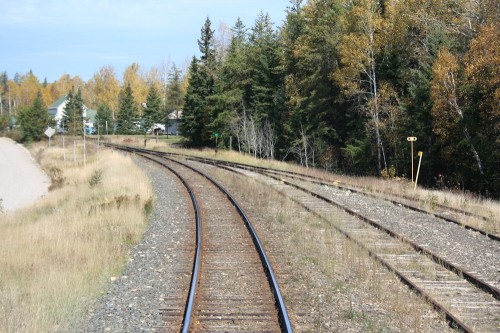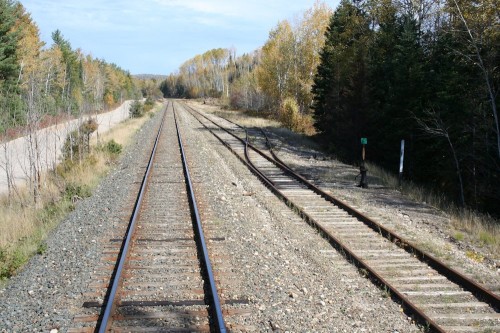At mile 150.9, one mile north of Perry siding, is a spur into the Algoma Central Railway’s former ballast pit. While today this location is abandoned, traces still remain.
At mile 150.9, the mainline switch to the spur. The switch has been completely removed some time ago, but the rails beyond the switch still exist.
Looking down the spur into the ballast pit. Note just past the private road crossing that a switch is still in place in the weeds, although the switchstand has been salvaged and removed from these abandoned tracks:
Abandoned rails in the old pit:
This March 1981 photo of the same location shows that at least for a time this spur was actually used to load pulpwood logs. It’s not clear whether even then the ACR was still actually sourcing any ballast from this pit, or if they obtained it from other sources (slag from various types of smelting operations was also popular on many railways to use for ballast), although the embankments in the background don’t show any signs of fresh excavation:
A bit farther south and upgrade from the switch to the spur, we find a dragging equipment detector (DED). This installation consists of a relay box and a set of paddles between the rails that will trigger an alarm if a piece of hanging or dragging equipment off a railcar hits one of the paddles (the paddles between the rails may be difficult to see in the smaller image, click on the image for a larger view). The gravel road descending to the right travels through the ballast pit area as seen above:
Just to the south of the DED, the road crosses over to the west side of the tracks and passes a pair of small structures. Unsure if these are former railway related maintance buildings or something else (private camp/cabins, railway or lumber company bunkhouses?)
Just a little bit farther down, and on the opposite side of the tracks, is this little collection of small structures. This appears likely to have been a private cabin. The bordered area between the main cabin and the smaller sheds looks like it could have once been a garden. And while you can’t see it in the smaller image, in the original large image I found the handle of an abandoned push lawn mower sitting in the weeds behind the sheds:
At this point we’re only a couple hundred meters north of the Perry section house, with the trees closing in on both sides forming a nice separation between these scenes and the railway structures at the north end of Perry siding.

